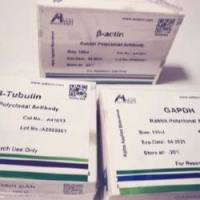Analysis of DNA Restriction Enzyme Digests by Two-Dimensional Electrophoresis in Agarose Gels
互联网
621
Two-dimensional (2D ) electrophoretic fractionation of digested DNA has been useful in analyzing and comparing the genomic structure of viruses and prokaryotic organisms (1 –4 ). For eukaryotes, it has been used to examine the genomic distribution of multicopy gene families (5 ), to determine the methylation status of individual members of such families (6 –8 ), and to analyze the physical organization of complex genetic loci (9 ,10 ). The basic principle is straightforward (Fig. 1 ): High-mol-wt DNA is digested in solution with a restriction enzyme of choice and the digest electrophoresed in the first dimension. The sample lane is cut as a longitudinal strip from the gel, equilibrated with appropriate buffer, and incubated with a second restriction enzyme. The strip is then embedded in a second gel and electrophoresed in a direction perpendicular to the first. Although simple in concept, the procedure involves many manipulations: thus the chances of accident are high in the beginning. Close attention to detail and a stoic attitude toward sudden failure are useful in persevering to a good series of high resolution gels. We describe first the basic 2D procedure as practiced in our laboratory (7 ,8 ) and additionally comment on the literature with regard to reported technical descriptions and applications (see Notes ).








